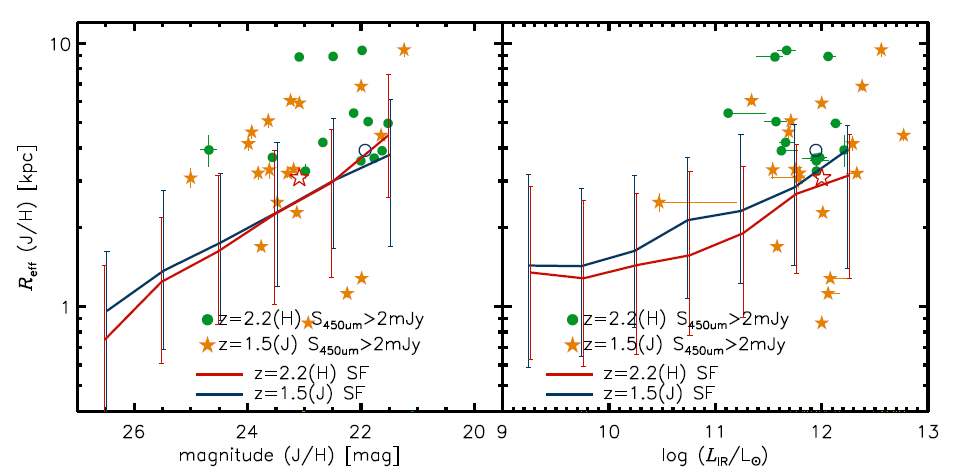SCUBA-2 Ultra Deep Imaging EAO Survey (STUDIES). II. Structural Properties and Near-infrared Morphologies of Faint Submillimeter Galaxies
The population known as “submillimeter galaxies” (SMGs) was first discovered using the SCUBA on the JCMT Telescope at 850μm. SMGs are understood to be a population of massive, dust-enshrouded systems which are forming stars at rates of 100-1,000 times faster than the Milky Way currently does. However, there's a problem! The typical angular resolution of single-dish observation at 850μm is 15–30''. Therefore, it is a challenge for us to analyse the morphology and then to study the mechanism(s) trigger the starburst in SMGs.
With the SCUBA-2/JCMT observation at 450μm, which is deeper than that at 850μm because of the roughly two times higher angular resolution and therefore lower confusion limit, Dr Yu-Yen Chang (a postdoctoral researcher at ASIAA) and her collaborators, including Fangxia An and Yiping Ao from PMO, detail studied the structural properties and NIR morphologies of 450μm-detected SMGs. They found that the SMGs and star-forming galaxies show high fractions (~70%) of disturbed features at z=2, which suggest that their star formation activity is related to galaxy merging and the stellar structures of SMGs are similar to those of star-forming galaxies.
